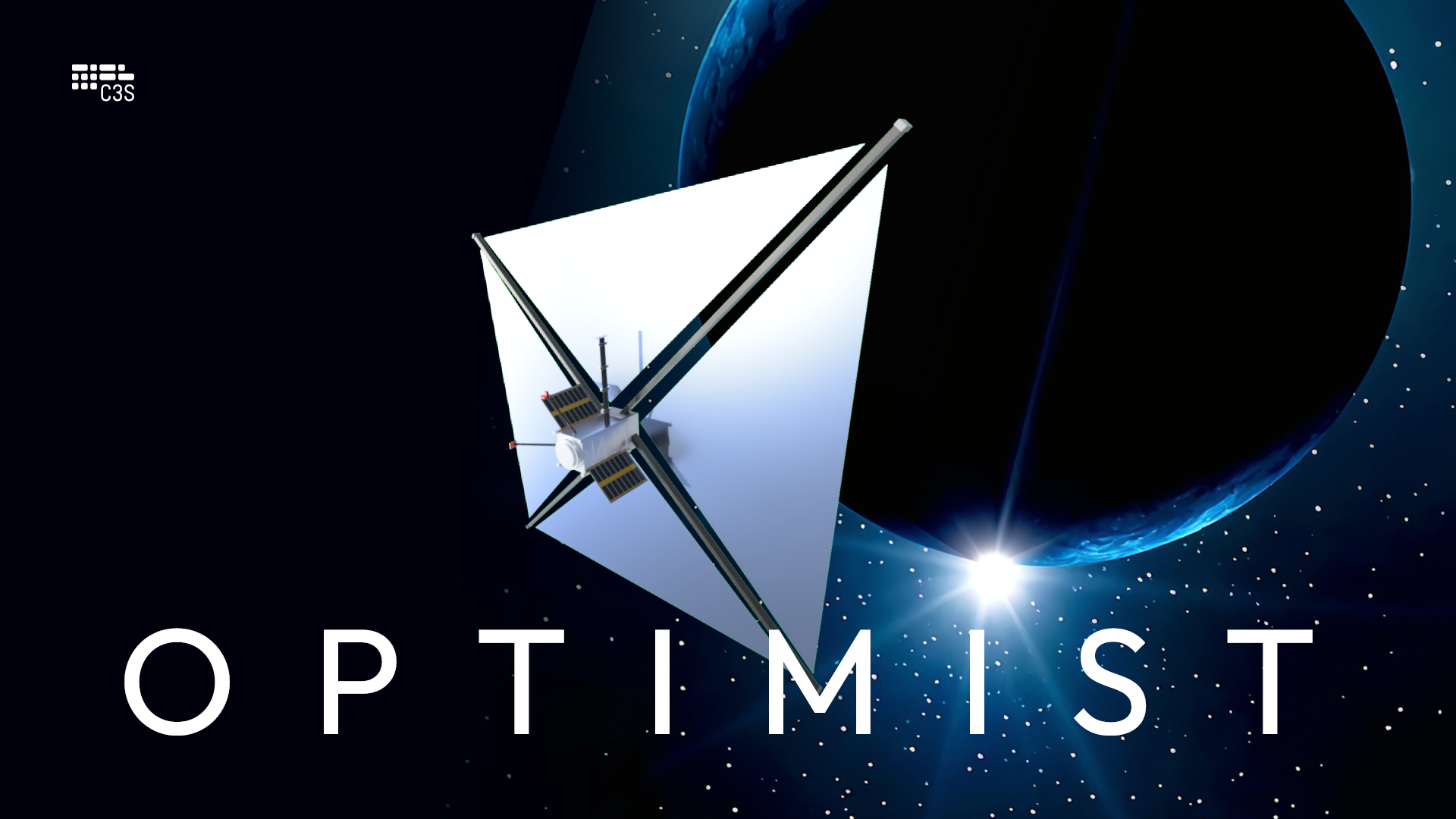New in-orbit demonstration CubeSat project with Deployable Membranes based on ADEO-M
Oktober 2025

New in-orbit demonstration CubeSat project with Deployable Membranes based on ADEO-M
Oktober 2025
The OPTIMIST mission, kicked-off in August 2025 to undergo a Phase A/B1, will involve a CubeSat deployed at an altitude of about 550 kilometers for one year. Its main goal will be to mature and validate the SAILOR payload technologies via statistically measuring near-Earth submillimeter, millimeter and centimeter sized debris populations and using a large deployable membrane (5–7 m²) equipped with acoustic sensors and a camera system. These instruments will detect and analyze impacts from small debris, providing valuable data for future, larger-scale missions: OPTIMIST will field-test essential technologies for the final target, the full-scale-mission SAILOR, which is dedicated to the scientific objective to investigate in-situ small space debris and its evolution. The results of the precursor mission OPTIMIST, to be launched in late 2027, will support the feasibility and design of a robust debris detection platform, which can be used with several satellites in the layer of a large satellite constellation for better debris impact predictions.
The first milestone of the project has already been completed with successfully closing the Mission Baseline Review with ESA. The Phase A/B1 study with breadboarding activities assesses technologies identified in SAILOR’s earlier phase, define mission architecture and evaluate launch options—favoring European launchers. Trade-off analyses ensure the mission is designed for maximum reliability and cost-efficiency, while meeting all technical requirements.
Under the project-lead of C3S (Hungary), HPS-Germany is responsible for the deployable membrane module, which is based for the OPTIMIST Mission on HPS’s deorbit module ADEO-M. HPS-Romania will perform the membrane manufacturing and the acoustic sensor bonding process. Further project partner under the prime C3S is University of Kent (UK) ensures extensive knowledge at the space debris science part and access to facilities to perform experimental simulation of hypervelocity impacts.
With SAILOR’s closure of Phase A and start of Phase B1 and the incorporated by the OPTIMIST precursor study, the SAILOR-project is poised to make significant progress toward safer and more effective management of space debris, paving the way for future missions that will help protect Earth’s orbital environment. SAILOR and OPTIMIST are part of ESA’s Space Safety Programme (S2P), which is dedicated to protect Earth’s and in-orbit infrastructure from dangers from and in space.
